Virome of Hyalomma and Rhipicephalus ticks from desert of Northwestern China
- PMID: 40356718
- PMCID: PMC12068223
- DOI: 10.1093/ve/veaf022
Virome of Hyalomma and Rhipicephalus ticks from desert of Northwestern China
Abstract
Ticks are important vectors for pathogen transmission, yet studies on the diversity and distribution of viruses carried by ticks in desert regions remain limited. This study investigated the tick virome in desert areas of Xinjiang, China, and identified two tick species, Hyalomma asiaticum and Rhipicephalus turanicus. A total of 30 meta-transcriptome sequencing libraries were constructed from ticks pooled by location, tick species, sex, and host. The proportion of viral reads ranged from 0.004% to 0.165%, and significant differences in viral alpha- and beta-diversity were observed between the two tick species. A total of 125 complete or nearly complete viral genomes were classified into 5 families of positive-sense single-stranded RNA viruses, 6 families of negative-sense single-stranded RNA viruses, and 2 families of double-stranded RNA viruses. Twenty-eight viral species were identified, including 20 known viruses and 8 novel viruses from the genera Orthonairovirus, Quaranjavirus, and Mitovirus, and families Peribunyaviridae and Narnaviridae. Notably, the discovery of Desert orthonairovirus, Desert quaranjavirus, and Desert peribunya-like virus revealed a potential new role for desert ticks as viral vectors. Among the other 25 viruses, 12 were specific to H. asiaticum, and 9 were specific to R. turanicus. This study highlights the diversity of tick-borne viruses in Xinjiang's desert regions, their distribution across different tick species, and underscores the importance of these tick species in pathogen transmission. These findings provide scientific evidence for further research into viral circulation in desert ecosystems and the potential public health threats posed by tick-borne pathogens.
Keywords: Hyalomma asiaticum; Rhipicephalus turanicus; desert; emerging tick-borne virus; tick virome.
© The Author(s) 2025. Published by Oxford University Press.
Conflict of interest statement
The authors declare no competing interests.
Figures

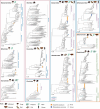
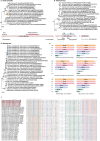
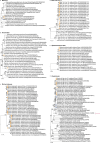
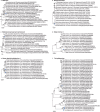
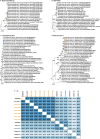
Similar articles
-
Records of three mammal tick species parasitizing an atypical host, the multi-ocellated racerunner lizard, in arid regions of Xinjiang, China.Parasit Vectors. 2021 Mar 4;14(1):135. doi: 10.1186/s13071-021-04639-z. Parasit Vectors. 2021. PMID: 33663591 Free PMC article.
-
Metatranscriptomics Reveals the Diversity of the Tick Virome in Northwest China.Microbiol Spectr. 2022 Oct 26;10(5):e0111522. doi: 10.1128/spectrum.01115-22. Epub 2022 Oct 10. Microbiol Spectr. 2022. PMID: 36214702 Free PMC article.
-
Comparison of Viromes in Ticks from Different Domestic Animals in China.Virol Sin. 2020 Aug;35(4):398-406. doi: 10.1007/s12250-020-00197-3. Epub 2020 Mar 10. Virol Sin. 2020. PMID: 32157603 Free PMC article.
-
The Ecology of New Constituents of the Tick Virome and Their Relevance to Public Health.Viruses. 2019 Jun 7;11(6):529. doi: 10.3390/v11060529. Viruses. 2019. PMID: 31181599 Free PMC article. Review.
-
Tick repellents and acaricides of botanical origin: a green roadmap to control tick-borne diseases?Parasitol Res. 2016 Jul;115(7):2545-60. doi: 10.1007/s00436-016-5095-1. Epub 2016 May 5. Parasitol Res. 2016. PMID: 27146901 Review.
References
LinkOut - more resources
Full Text Sources

